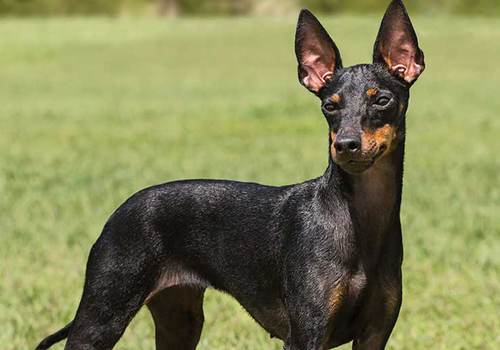Long before Manchester was famous for a soccer team, it was a center of England’s booming textile trade. Local mill workers of the mid-1800s had two favorite sports: hunting rabbits with small hounds and the revolting pastime of rat killing (turning a terrier loose in a rat pit and betting on the results). Breeders worked toward a two-in-one dog to excel at both. They crossed a popular ratter called the Black and Tan Terrier with Whippets; the result was a distinct Manchester type of terrier.
The breed reached the height of its popularity during the Victorian Era. TheStandard Manchesterwas thought to be a fitting companion to the “discerning gentleman” but theVictorian women wanted a smaller dog. To meet this demand, the Toy variety was created by breeding the smallest Standard Manchesters together. Though the early breeding of the Toy Manchester grew extreme and unhealthy, today’s Toy Manchester Terrier is much healthier and sounder, although slightly bigger than its early ancestors.
Up until 1959, the Standard Manchester and the Toy Manchester were registered as separate breeds, although interbreeding was permitted. Since then, the two breeds have combined to form one breed, the Manchester Terrier, with two varieties: the Toy and Standard. However, the AKC has grouped the two varieties separately. The Standard Manchester belongs to theTerrier Groupwhile the Toy belongs to theToy Group.











